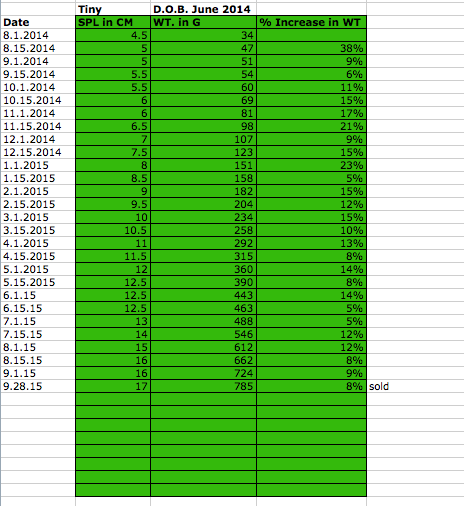Tiny the Leopard Tortoise
This is the story of Tiny the Leopard Tortoise. On July 24 2014 I received eight leopard tortoise hatchlings from Will Espenshade. His tortoise partner Yvonne G from TFO and he produce the best leopard hatchlings I have ever seen. They are strong, vigorous and eating machines after the 6 – 8 week head start they give their hatchlings. I would not buy a leopard hatchling from anyone else. My reason for buying 8 hatchlings was to sell some right a way to offset the expense of other tortoises I was buying. I bought those 8 wholesale and sold them retail all except one, who I named Tiny because, well, he was the smallest of the 8. He weighed 35 grams when I got him and his clutch mates were all 40 plus grams. The clutch hatched between June 1 and June 15th 2014, so he may have been the last to hatch but who knows. All I knew is that he was the smallest of the lot and I was afraid to sell him for that reason. With in a few weeks it became apparent to me that Tiny had a veracious appetite. He was the first to the community food plate and the last one to leave. Also he became very fond of Mazuri, preferring that to any other food, but he still ate a wide variety of items like grasses, weeds, Opuntia, leaves and flowers from hibiscus and roses.
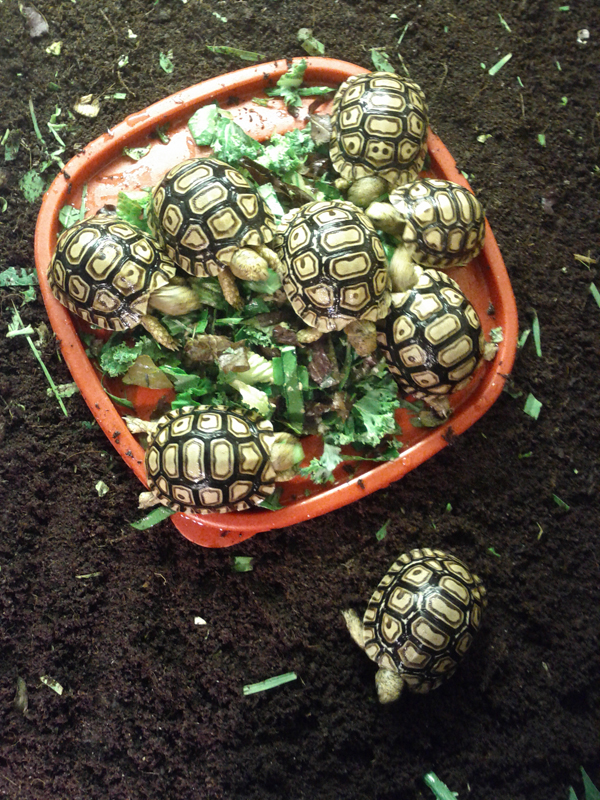
Tiny and clutch mates eating Aug. 1 2014
I chart the growth of all my tortoises for two reasons 1) to make sure they are growing and gaining weight steadily which is an excellent health indicator and 2) it’s fun;) Here is Tiny’s growth chart:
As Tiny continued to grow and grow, there were signs that he was most likely a ‘he’. Also later in the year I was turned on to South African leopard tortoises. They have a few traits that are different and more appealing to me than those from the northern Africa (Kenya) leopard tortoises that were most available in the pet/hobby trade here in the USA. So I decided to sell off my Kenyan leopard tortoises to make room for my growing South African herd. And since Tiny was most likely a male and was the largest of my 8 leopards I decided to sell him first. I put an ad in FaunaClassifieds.com with this caption and posted these three photos
Leopard Tortoise Juvenal
I’m selling my beautiful almost 7 inch leopard tortoise. Possible male. Hatched in June 2014 and weights over 750 grams already. Very solid and healthy with a perfectly smooth shell. I have put a lot of care into this animal but unfortunately I need to make room for other projects. Price is $300 + shipping for this stunner.
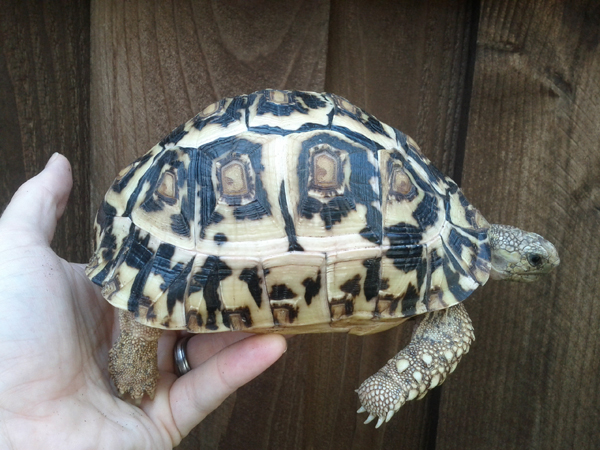
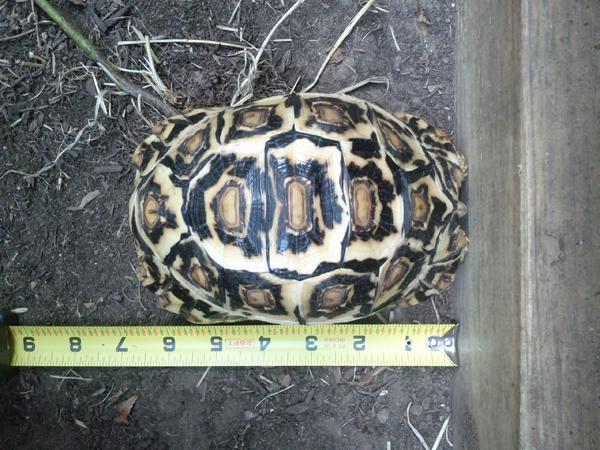
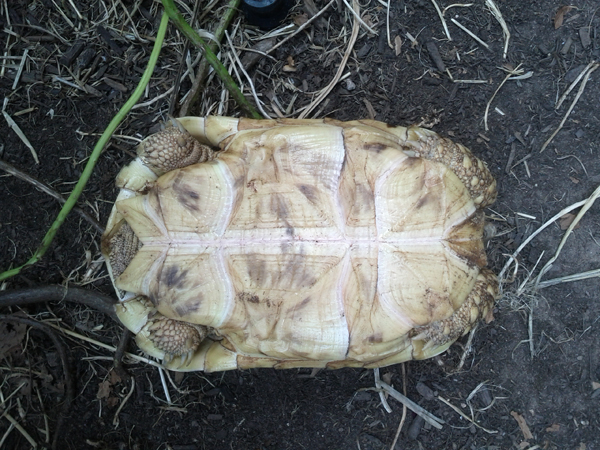
Little did I know that this ad was about to draw a lot of attention. Within 5 hours of posting it, I got 6 offers to buy Tiny which made me happy but at the same time made me think that maybe I sold him a bit too cheap. My asking price reasoning was that adult males sell for around $500 to $650 plus shipping and he was only 15 month old so I figured $300 plus shipping was fair. Not only was I getting a bunch of offer to buy him, several people posted below the ad seemly in shock of his rapid growth at such a young age. My goal with all my tortoises is to raise them as smooth as possible NOT to grow them fast. Tiny was indeed a fast grower and I was asked what I attributed the amazing grow rate too. To be honest yes Tiny was the fastest grower out of my initial 8 leopard tortoises that I kept for one year (4 Kenyan leos and 4 South Africans) but not by much. I have one Kenyan leo from a different breeder who did not grow much for the first 6 months after I got her but now is on a huge growth spurt and reached 560 grams at 18 months. And one South African leopard tortoise who is also an eating machine and weights 555 grams at 13 months which almost exactly matches Tiny’s growth rate. However South African leopard tortoise do grow bigger than their Kenyan cousins. I attribute Tiny’s rapid growth rate to several key factors:
- A great headstart from the breeder with plenty of hydration both internally and externally.
- Continued hydration both internally and externally while in my care i.e. daily warm water soaks and 80%+ RH in the enclosure
- Optimal diet of high quality foods
- Genetics/Behavior – Some tortoises are just big eats right out of the egg. I don’t know why this is the case but the quantity of food consumed on a daily/weekly/monthly basis between different tortoise is quite apparent even to the casual observer. Is this a genetic or a behavior thing? Much more research needs to be done to find the answer.
Growing a tortoise fast should never be the goal in my opinion but growing them smooth and pyramid free should be. Even with my approach, I have varying results in the grow rates between my leopards. Some seem to grow fast, some about average and some do grow slower that average but all my leopards that I got as hatchlings that weighed less that 50 grams grow very smooth and that included Tiny the Leopard Tortoise.

